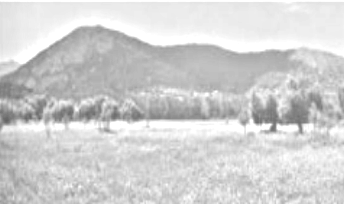
 |
| Traditions and Culture |
|
 |
TRADITIONS & FOLKLORE – INTRODUCTION
The life on Imvros, a typical Greek island in the
Northern Aegean Sea, was directly linked to nature and religion. The circle of
seasons, enriched with the yearly church calendar, was embellished with customs,
traditions and activities, directly related not only to the place and its
centuries-long history, but also to the current everyday needs of the islanders,
in their struggle for survival, communication, expression and entertainment,
always within their social, protective net. The variety and ingenuity of the
Imvrian customs is remarkable.
Additionally, they provide rich information about the
everyday life, the household economy, the human relations and the particular
characteristics of each village of Imvros. Thanks to some enlightened and
charismatic people, prelates and scholars of nationwide importance like
Bartholomew Koutloumousianos the Imvrian (1772-1851), Nikephoros Glykas the
Imvrian (1819-1896) and Meliton Chatzis (1913-1989) and the professor of
linguistics Nicolaos Andriotis (1906-1976) but also of local teachers like
Alexander Zafeiriadis (1888-1956) and Kostas Xeinos (1913-1987), the painter
Nikos Paleopoulos (1908) and others, the interesting aspects and expression of
the island’s cultural identity were preserved.
These include the traditional architecture, the local
dressing and dialect, the myths and legends, the traditions, the proverbs, the
superstitions and beliefs, the tales, the sayings and riddles, the publications,
the customs related to birth, marriage and death, the religious festivals, the
music, the songs and dances, the children games, the folklore arts, the
traditional occupations etc.
THE MUSICAL AND DANCING TRADITION OF IMVROS
Imvros and its Music
Imvros belongs to the Thracian Sporades cluster of islands
and, together with the rest of the Eastern Aegean islands, formed for centuries
part of the natural extension of the coasts of Asia Minor, historically and
culturally directly linked to the “Aeolian Land”. [T.N.: “Aeolia” is the region
of the Asia Minor coast from the Dardanelles Straits down to Smyrna, including
the islands opposite this coast and is named after the ancient Greek tribe of
Aeoleis who colonized the area.]
Imvros and Tenedos are the only two Greek islands which,
although ceded to Turkey in 1923, according to the Treaty of Lausanne, and
exactly because of this isolation, managed to keep their musical and dancing
tradition with its traces deeply rooted in the old, single geography of the
Eastern Aegean intact. On the contrary, the rest of the Eastern Aegean islands
which in the past considered Asia Minor as their “mainland”; after the Asia
Minor Catastrophe (T.N.: The Greco-Turkish War of 1919-1922 and the subsequent
population exchange between the two countries) turned their orientation to
Greece, cutting thus their umbilical cord with their “motherland”, Asia Minor.
Subsequently, it can be said that the island’s musical
tradition bears in itself the musical wealth of Asia Minor in its “Imvrian
version”, characterized by its strong local dialect, leading to the creation of
the “Imvrian style”, which falls directly into the category of the Aegean
musical tradition. The musical tradition of Imvros belongs to the Greek islands’
musical idioms, with elements from the wider geographic region. This is evident
in the tunes and instrumental motifs of the Imvrian music.
The Architecture of Imvros
A self-sufficient town planning system, in absolute
harmony with the natural environment By 1964, the seven settlements of Imvros,
with 200 to 2.500 inhabitants each, presented an image of unique beauty. There
is no reliable evidence concerning the exact time and conditions of their
establishment. It is sure, however, that their traces go back to three centuries
before, sharing the same structural and morphological features of the Macedonian
architecture with the rest, neighbouring Northern Aegean islands (Lemnos,
Samothrace, Thasos etc.). Moreover, they are situated in inaccessible places,
away from the coasts.
The strategically crucial geographic position of Imvros,
located right across the exit of the Dardanelles Straits, has determined its
fate from the ancient times until our days. The islander, forced to live under
unfavourable natural and historical conditions, developed a flexible and easily
adjusting social character, which was strengthened through the maintenance of an
internal balance and unity in intercommunal relations.
These features as well as their economic independence were
necessary for the Imvrians to deal with the natural isolation due to the sea, as
well as with the indifference of the state, which sometimes also resulted in
their economic isolation. For these reasons, the productive activities on Imvros
were based on the closed (self-sufficient) domestic economy.
The rural property was limited and distributed in such a
way, so that it could provide a certain sufficiency of products to everyone,
contributing at the same time to the necessary social balance. The internal
unity of the community was also strengthened by the experienced collective
memory, crystallised in the tradition and the institution of participatory
democracy (we shouldn’t forget that in the ancient times, Imvros constituted an
Athenian cleruchy). All inhabitants of the island contributed, among other
things, to the realisation of public benefit projects (construction of roads,
schools, crop gathering etc.)
The fear of raids and the political instability forced the
Imvrians to avoid any provocative demonstration of wealth or of national and
religious symbols through their traditional architecture (they built churches
without domes and high bell towers, simple schools, lack of mansion-houses
etc.).
The above peculiarities and features were clearly
imprinted in the rough, mountainous land where the Imvrian settlements were
situated, leading to a town planning, imposed by necessity and the need for
self-sufficiency.
|
|
|



|